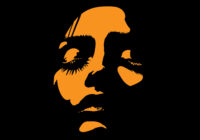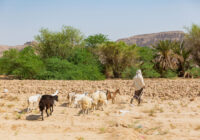Discerning eyes have known for quite a while that the Arab world is more than it appears in conventional photography. The old visual language of minarets and souks, of unassuming eyes set deep in dark faces, of conceptual or actual “unveilings” and of non-consensual or ambivalent colonial portraiture is one of yesterday.
Though this may have seeped backward, another dynamic of documentary photography came forward, one defined by the symbiotic relationship between news cycles and photographers in the region. Whatever media outlets needed, photographers were shooting. From this political economy of photography arose the decades of image production that defined a new visual shorthand for the Arab world: namely, the necessary but relentless Rolodex of photo stories focused on war, conflict and revolution.
In recent years, however, remarkable bodies of work have been coming out of a new generation of young Arab photographers, due in part to the support of institutions like the Beirut-based Arab Fund for Arts and Culture (AFAC). Its Arab Documentary Photography Program, which has been training and funding emerging Arab photographers since 2014, has helped produce an impeccable collection of photo essays.
Available here, the collection is courageous, surprising and powerful, with crackling lenses weaving between water security in Jordan, climate change in Mauritania, the plight of mine workers in Morocco and the transgender community in Lebanon.

“We wanted to give the foreground to the image itself, as something that speaks to social, political, humanitarian issues across the Arab region,” says Rima Mismar, AFAC’s executive director. “And we decided to focus on photographers who are from and based in the Arab region, or in exile due to persecution or political conditions. Because it’s also a question of opportunity and access. The focus, from the beginning, was to really give voice to those who are in the stories they’re telling.”
Launched in 2014 in partnership with Magnum Foundation and the Prince Claus Fund, the program provides financial support as well as group and one-on-one mentoring from Arab and American photographers and Magnum fellows Randa Shaath, Eric Gottesman, Tanya Habjouqa and Peter van Agtmael. After the conclusion of each round, photographers also have opportunities to exhibit across the Arab region as well as in Europe and the US.
A cursory look through the online collection, the range of topic and style, is enough to give a person whiplash. One moment, you’re inside the underground lives of artists in Saudi Arabia. Another, you’re falling in love with Yemen’s Socotra Island. A third, you’re following a son’s odyssey through Egypt, Sudan and Kenya in search of his Nubian identity in the wake of his father’s death.

It’s striking that every project seems critical — every photo has teeth — but rarely in the form of easy, expected tropes. Every project is surprising in a different way: its intimacy or insight or access or technique. And because there isn’t a single methodology connecting the photographers, the collection becomes truly multi-phonic, further decolonizing the lens through which we see Arab stories.
More than intentionally shifting who holds the camera and has the kind of access and training to shoot these projects, the generation of photographers that AFAC is helping foster is also opening up entirely new places and perspectives for visual storytelling.
“You also have photographers who don’t live in central cities, giving us a glimpse into areas that are not in the limelight,” says Mismar. “Because when you speak of the Arab region, you speak of Beirut, Cairo, Tunis, the capital, and a lot of the peripheries are neglected. So, it’s important that we’re giving voice to those talents that are creating narratives that have historically been neglected.”

In addition to their support of emerging Arab photographers, AFAC has funded over 1,500 projects across the region since 2007. Its support extends to institutions and individuals in the fields of the performing arts, visual arts, writing, cinema, music, events and research.
“Most Arab countries do not have extensive public support for the arts. Artistic expression isn’t billed as a priority. So, the idea behind AFAC was to have an independent source of support to talents across the Arab region.”
In the past decade, since the Arab uprisings of 2011, AFAC has also emerged as a lifeline for creative communities in times of crisis. In 2012-13, the AFAC Express program gave support to artists living in affected countries who wanted to fast-track projects under restrictive conditions. In 2014, AFAC’s film program Crossroads enabled filmmakers to create what they wanted, as opposed to the generally one-note projects that film festivals and production houses wanted to market about the region.
Most recently, in light of Lebanon’s financial crisis starting late 2019, AFAC has provided emergency support to the country’s creative community. Its Solidarity Fund for Arts and Culture Structures in Lebanon was intended to mitigate the impact of the crisis on art institutions. “The jury selected 23 organizations across Lebanon, thinking at the time that the economic crisis was the worst that could happen. We announced the results on July 31st, three days before the explosion [in Beirut]. And then suddenly we were in an emergent situation within an emergent situation,” Mismar recalls.

Though AFAC’s work is markedly different from the kind of humanitarian aid that institutions rushed into, the organization decided to reopen the Solidarity Fund for individuals. To date, 210 artists who had lost homes, studios or workspaces to the explosion have been directly supported by the fund.
“It was a strategic decision. We work to support art that is critical, that is provocative, that asks questions, that opens dialogue. And this work can’t be done if artists and writers and researchers weren’t able to survive circumstances like 2020’s.”
*[This article was originally published by Arab Digest.]
The views expressed in this article are the author’s own and do not necessarily reflect Fair Observer’s editorial policy.
Support Fair Observer
We rely on your support for our independence, diversity and quality.
For more than 10 years, Fair Observer has been free, fair and independent. No billionaire owns us, no advertisers control us. We are a reader-supported nonprofit. Unlike many other publications, we keep our content free for readers regardless of where they live or whether they can afford to pay. We have no paywalls and no ads.
In the post-truth era of fake news, echo chambers and filter bubbles, we publish a plurality of perspectives from around the world. Anyone can publish with us, but everyone goes through a rigorous editorial process. So, you get fact-checked, well-reasoned content instead of noise.
We publish 2,500+ voices from 90+ countries. We also conduct education and training programs
on subjects ranging from digital media and journalism to writing and critical thinking. This
doesn’t come cheap. Servers, editors, trainers and web developers cost
money.
Please consider supporting us on a regular basis as a recurring donor or a
sustaining member.
Will you support FO’s journalism?
We rely on your support for our independence, diversity and quality.






